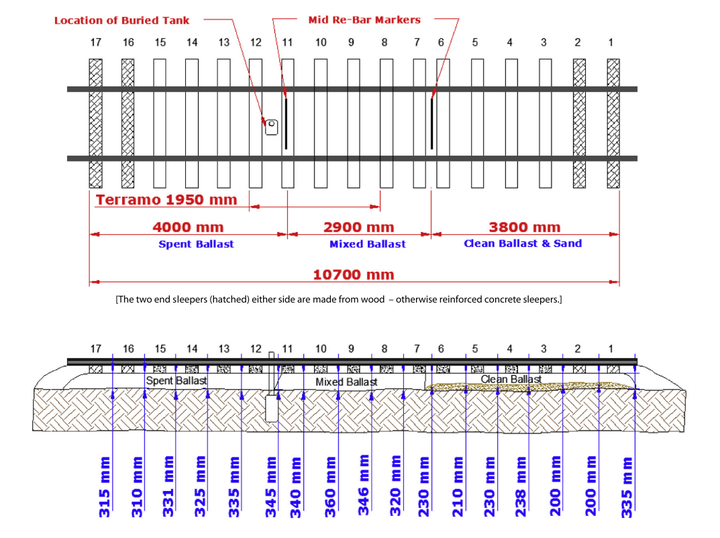 Test track at the University of Edinburgh
Test track at the University of Edinburgh
Abstract
The overall aim of this project was to relate ground penetrating radar (GPR) to a ballast fouling index (FI). Laboratory research aimed at characterising the electromagnetic properties has enabled researchers worldwide to determine ballast thickness using impulse ground penetrating radar (GPR) - based upon derived values of the relative electrical permittivity or dielectric constant.
In this paper, a series of GPR experiments, following on from these laboratory experiments, were undertaken on a full scale track bed using a range of bowtie antennas from 500 MHz to 2.6 GHz. The key innovation reported is the use of scatter analyses of the GPR waveforms, featuring area, axis crossing and inflexion point analyses. These scatter analyses were then used to predict the Ionescu ballast fouling index. A correlation coefficient greater than 0.9 was obtained by using a 500 MHz bowtie antenna in the parallel orientation in conjunction with a scan area analysis.